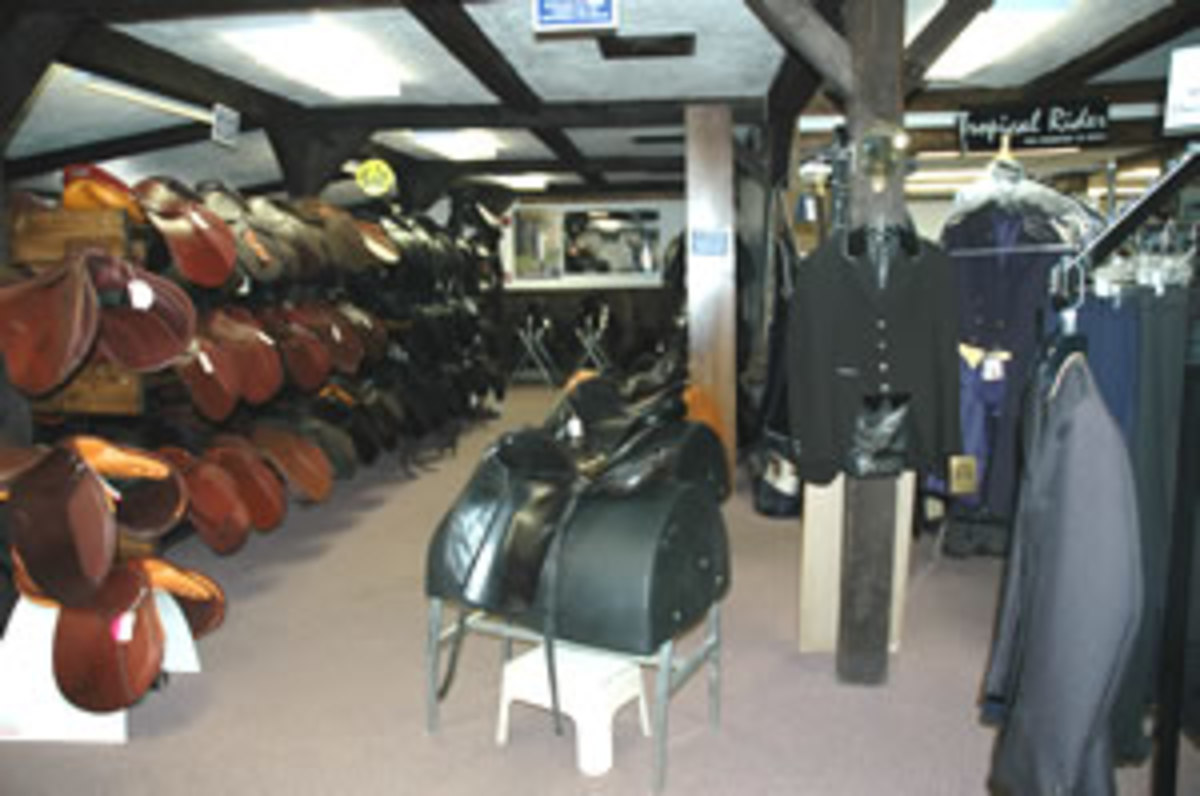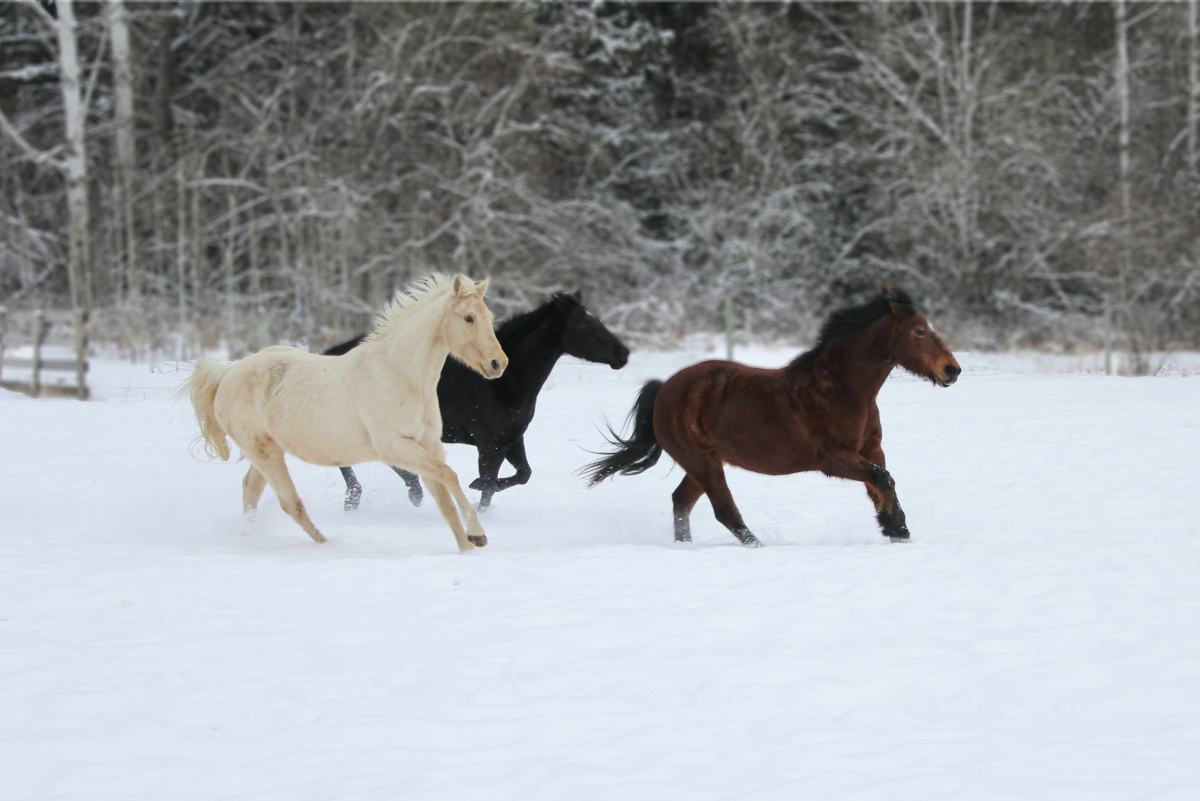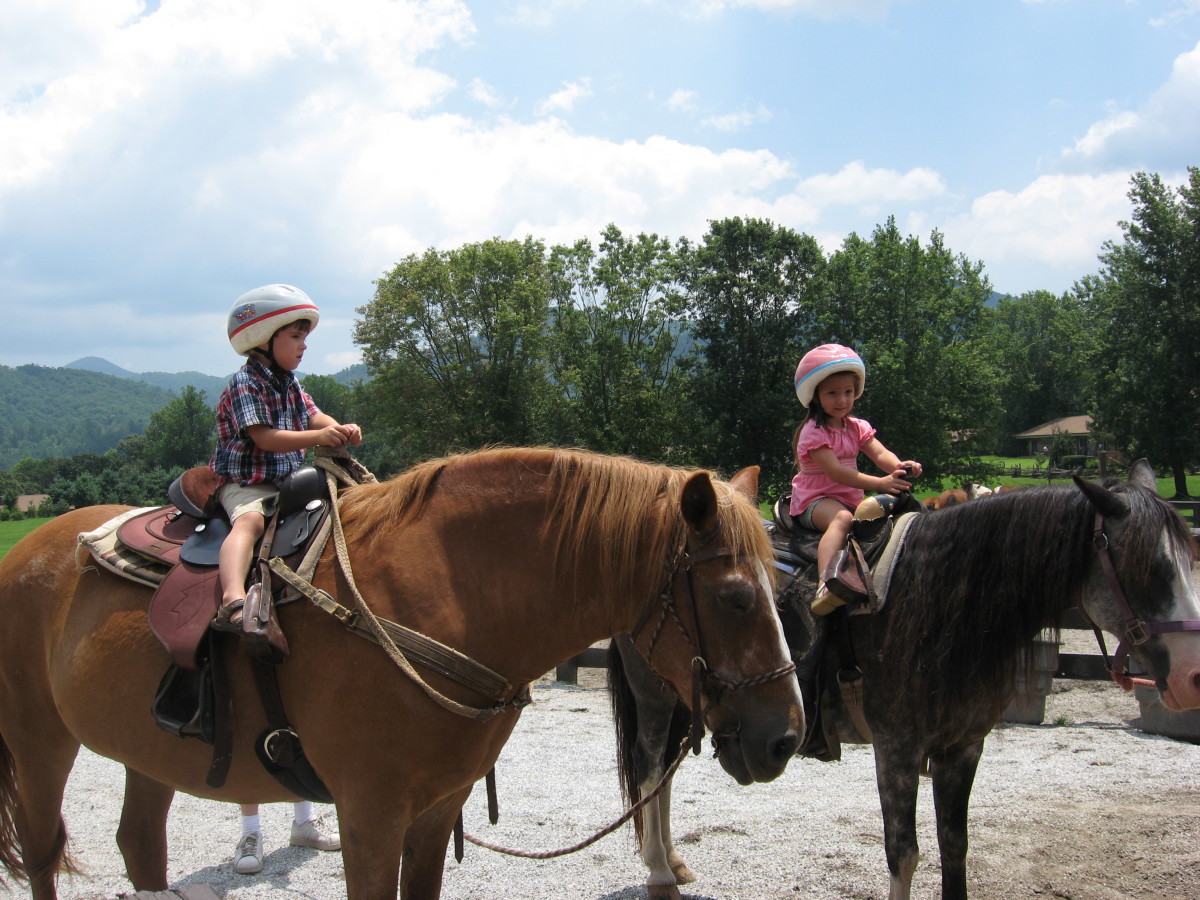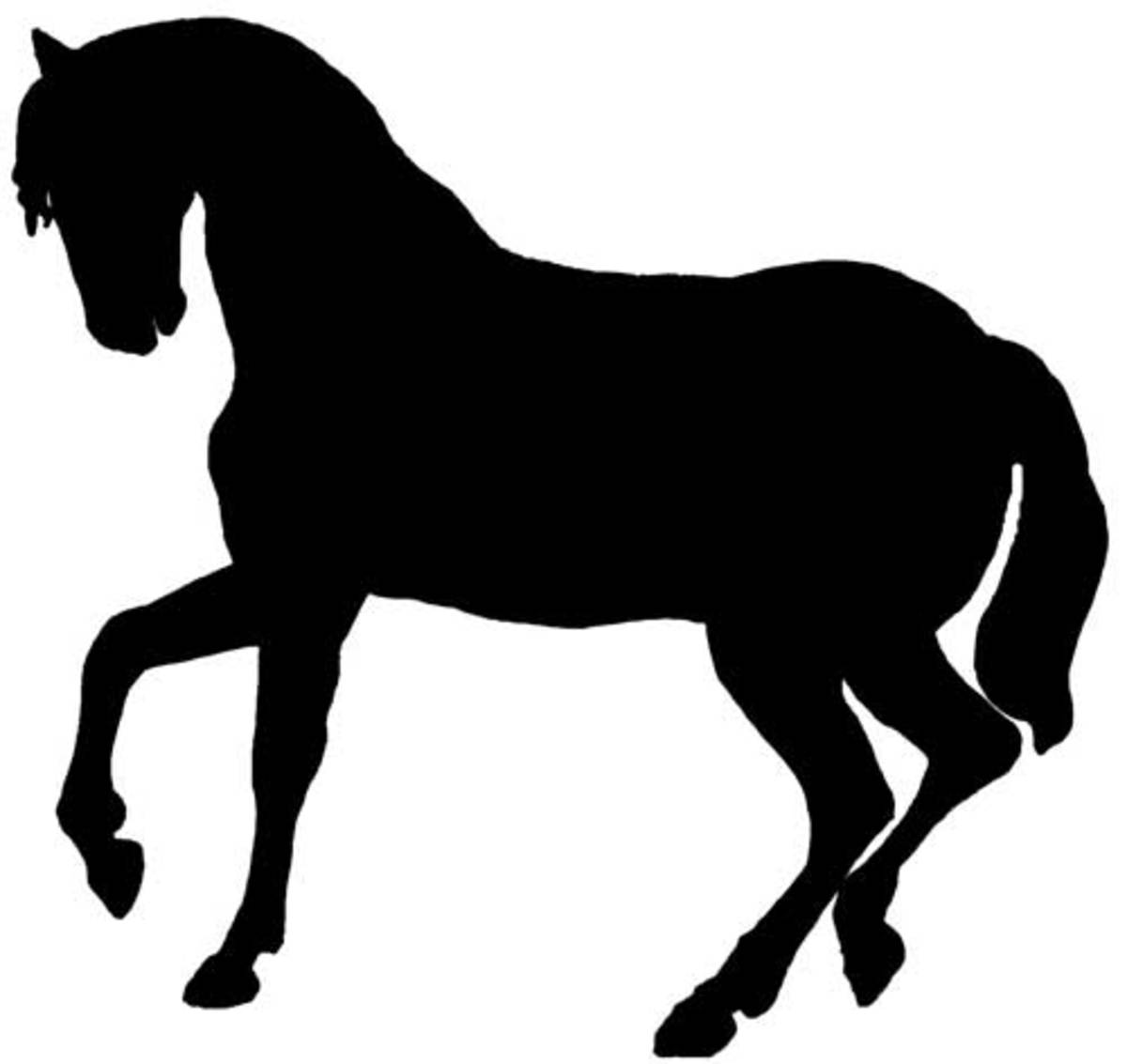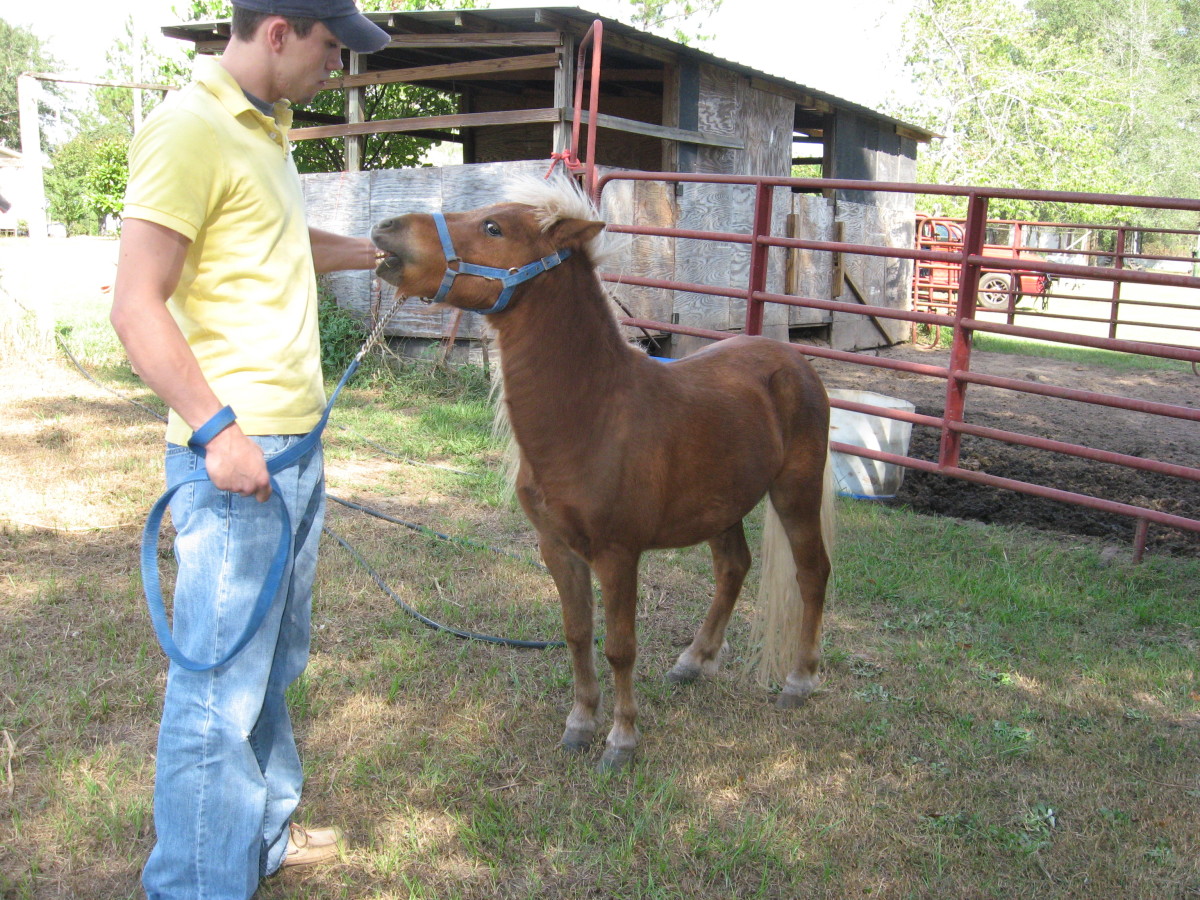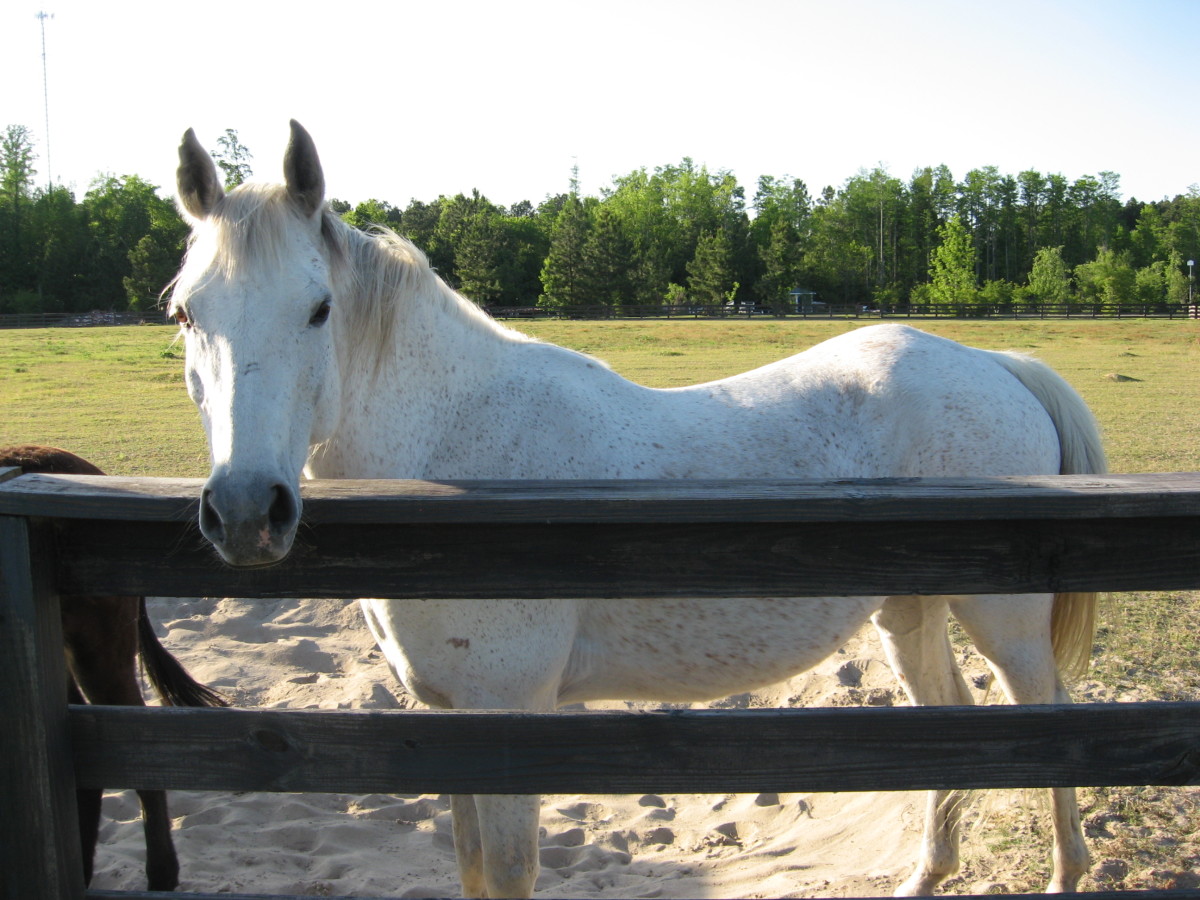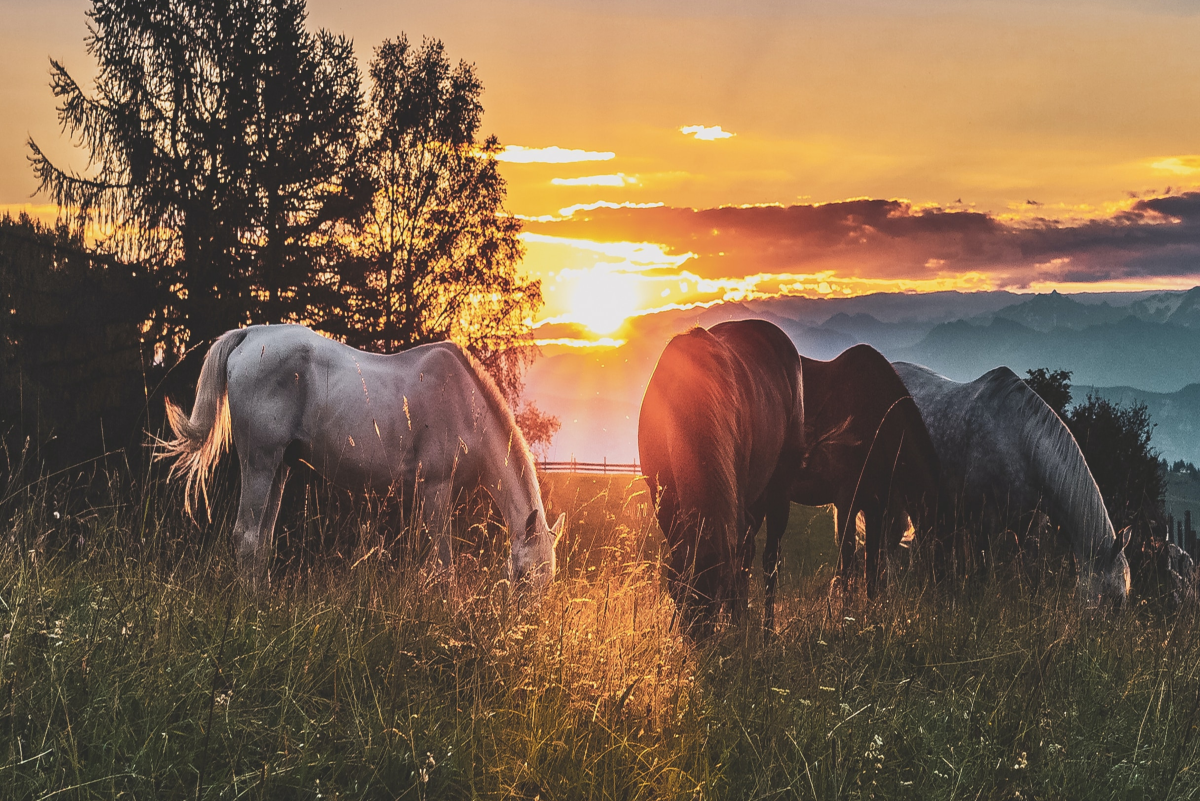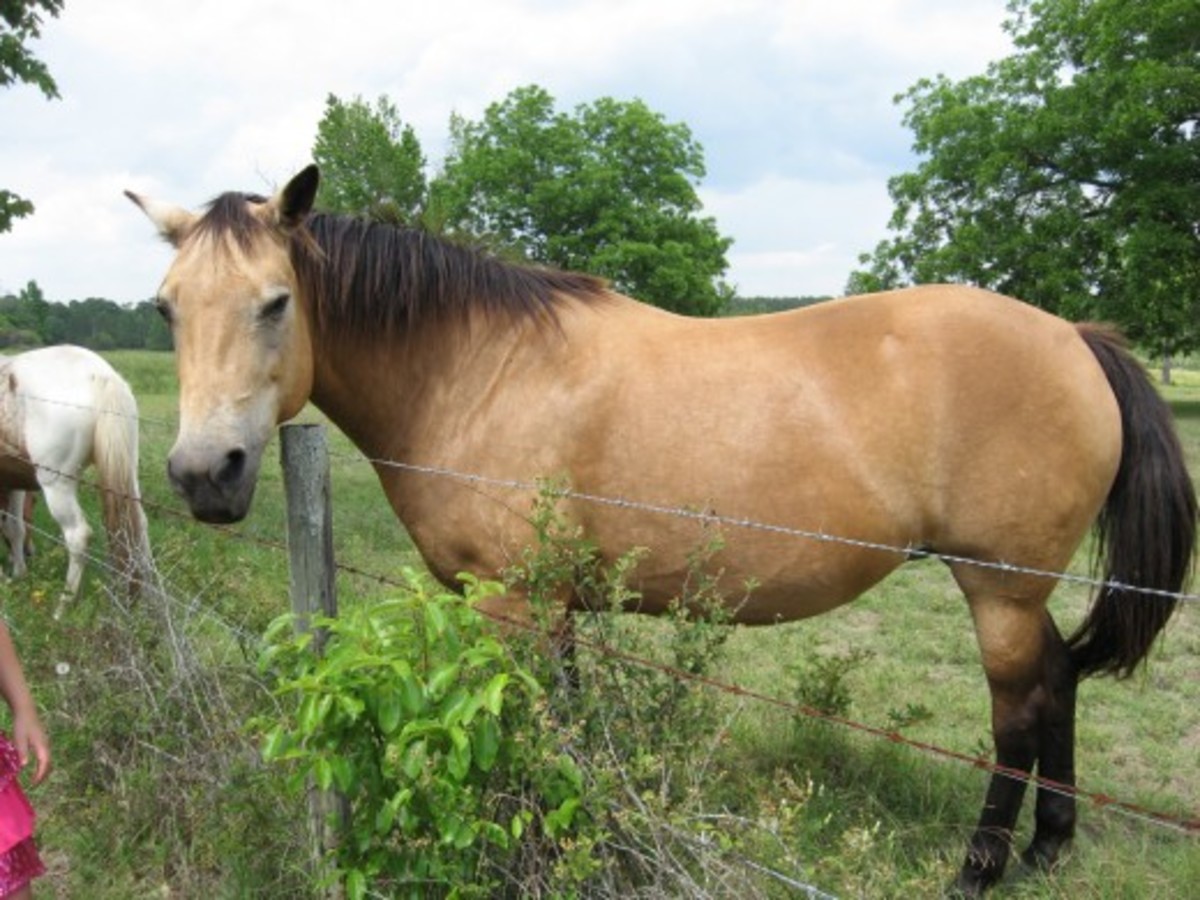Equine Vision: How Horses See
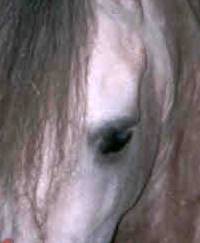
Ole Paint jumps out of his skin and you are left hanging in the air. Once you get your bearings, you search the landscape trying to figure out what he saw that was so confounded scary? It might not seem like there is anything at all out there to spook Ole Paint, but he sees it differently!
Equine vision is quite different from human vision. Let's take a look at how horses see. Horses, like most grazing animals that are preyed upon, have monocular vision. With the eyes positioned on either side of the head, they see independently with each eye. This gives the horse a wider range of vision, which is important in watching for danger and eating at the same time. They can see front, back and sides all at once. In addition to monocular vision horses have very poor depth perception and are colorblind.
Now, if something moves and catches his interest, the horse can switch to binocular vision and he can zero in on whatever moved. He does this by facing the object and using both eyes see the one picture. That is the reason Ole Paint suddenly jumps and turns around when he spooks.
Because of the way the horse's retina is designed he has very poor depth perception. As far as Ole Paint knows, that shadow on the ground could be a ten-foot hole. He's got to REALLY trust you to step into that shadow. But, learning to judge depth and distance can be learned by your horse, with patient and skillful training. In Horses and Horsemanship, M.E. Ensminger points out that today's performance horse is required to do many things that the wild horse would never experience, like jumping a course of hurdles, running a reining pattern, or barrel racing. The domestic horse has learned to trust the human trainer's judgment, rather than relying on what his sight tells him.
Because the horse cannot change the shape of the eye's lens the way we can, he has to focus by raising and lowering his head. In addition to using his head and neck for balance, it is important that the horse have freedom to move his head so he can focus. This is especially important when jumping. Keeping your hands elastic to afford head movement allows him to focus on the fence you are asking him to jump.
In The Mind of the Horses R. H. Smythe writes, "The horse does not see a landscape as we do. In the first place, being colour blind, the horse fails to see green fields, blue skies, and water, and the spring and autumn tints of trees. The eyes of the horse are quite incapable of breaking up the visual image. . . It cannot sort out a grey rabbit from among a patch of green cabbages, unless the rabbit moves."
So, when you take into consideration that Ole Paint doesn't know how far away "it" is, what "it" is, or anything else about "it", except that "it" MOVED, you can understand why his first instinct is to jump and run, THEN stop and LOOK at "it" from a SAFE distance.
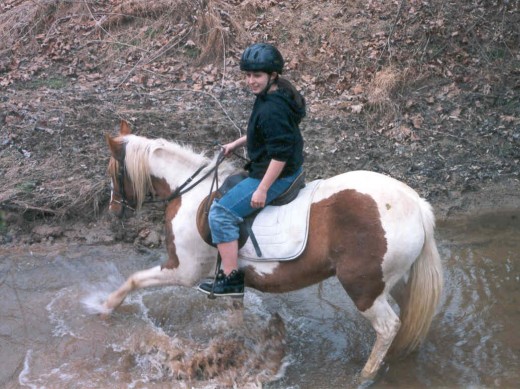
grooming gloves
This content is accurate and true to the best of the author’s knowledge and is not meant to substitute for formal and individualized advice from a qualified professional.
© 2008 Donna Campbell Smith



